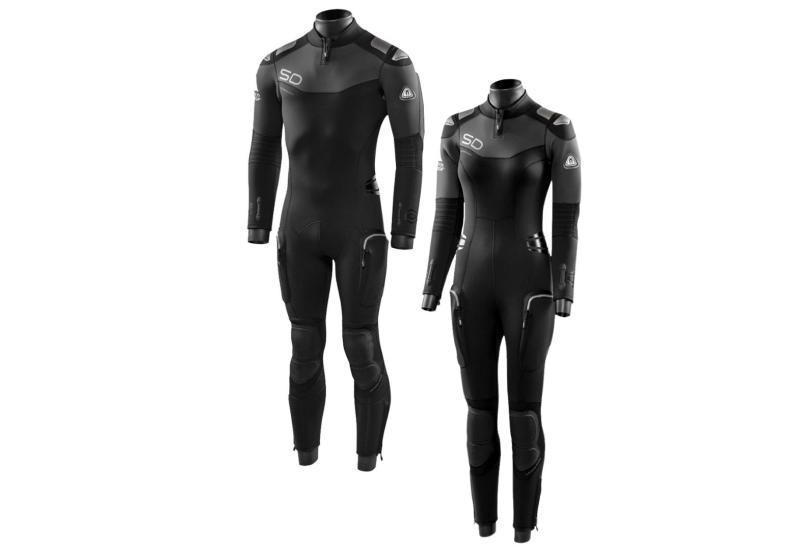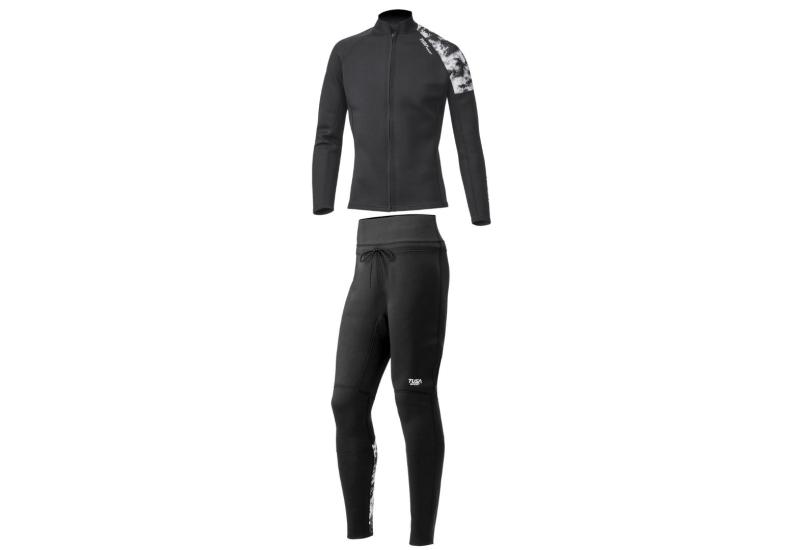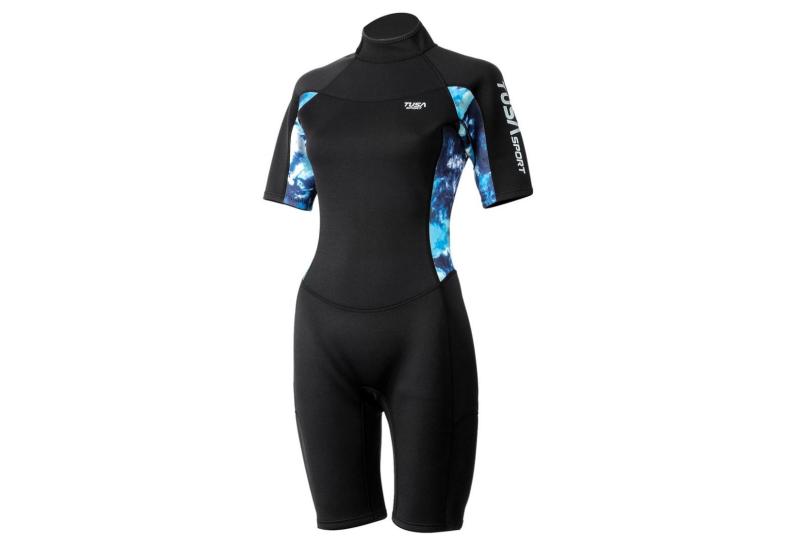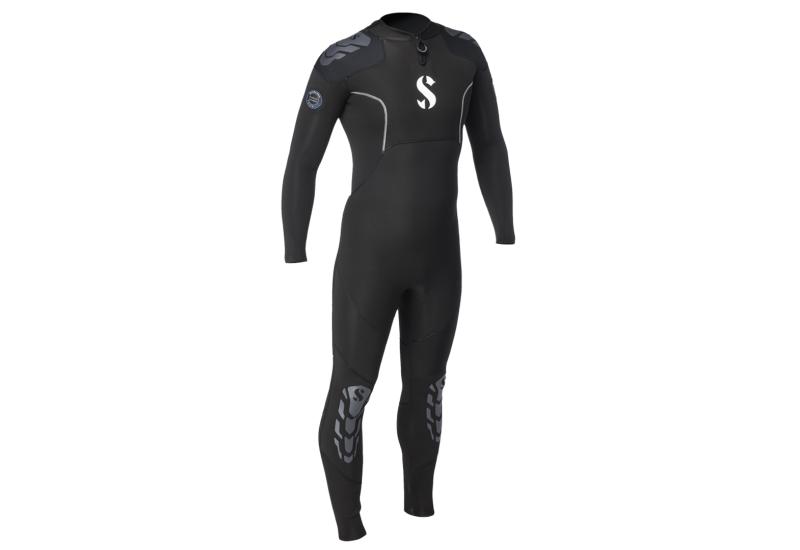Understanding the Types of Stitching Used in Scuba Wetsuits

Understand Wetsuit Stitching
Carrie Garcia
In wetsuit construction, seams are a critical component. The type of stitching used to make these seams can make a huge difference in how comfortable and watertight a wetsuit will ultimately be.
There are basically two types of stitching being used in quality dive wetsuits these days: the flatlock (also known as flatseam) stitch, and the blind-stitch, which is used in conjunction with a gluing process.
The flatlock stitch is commonly found in warm-water suits 3mm thick and less. This stitching method either butts or overlaps two pieces of material and then sews them together with multiple needles in a series of three or four rows of stitching, creating a very strong seam. The flatlock stitch is easier and faster to make, so it tends to be less expensive than a blind stitch, and it allows more stretch to the seam, which can be helpful with today’s hyper flexible neoprene. It’s also a flatter seam, hence the name, so it feels a lot more comfortable against bare skin. However, flatlock stitching does allow water to seep into the suit through its many needle holes. That’s why this style of stich is normally used on suits designed for warmer water where seepage isn’t such a critical factor.
The glued and blind-stitched seam tends to be found on colder water suits 3mm and thicker, primarily because this stitch doesn’t leak. The first step in this process involves gluing the suit’s neoprene panels with two or three coats of neoprene cement (hence the terms “double-glued” or “triple-glued”). This makes the seams waterproof. The second step is sewing the seams so they hold together. This is done with a “blind-stitch,” so-named because the needle penetrates only half the thickness of the material. This gives a seamless appearance on one side of the suit, unless it has been “double blind-stitched,” where this half-sewing is done on both sides of the seam.
Because of the added time and labor involved, blind-stitching tends to be more costly—especially if you’re talking a triple-glued/double-blind-stitched suit. However, what you get for your money is a strong, watertight seam.
On really high-end suits, manufacturers will sometimes run a bead of liquid silicone-based urethane over the glued seam on the opposite side of a blind-stitched seam, making it look like it’s been “welded” together. It makes the seam ultra durable because the liquid weld bonds to the entire seam rather than just at the stitch points. Glued-and-taped is yet another variation of this seam method where flexible bonding tape is applied with heat and pressure over the glued seam on both sides, eliminating the need for any stitching at all.
Bottom line: for maximum flexibility and comfort, you might want to go with a flatlock-seamed suit—that is, if you dive in warm water and don’t mind a little leakage. For maximum warmth and watertightness, you’d be better off with a glued and blind-stitched suit. In the world of diving, there’s plenty of room for both styles.
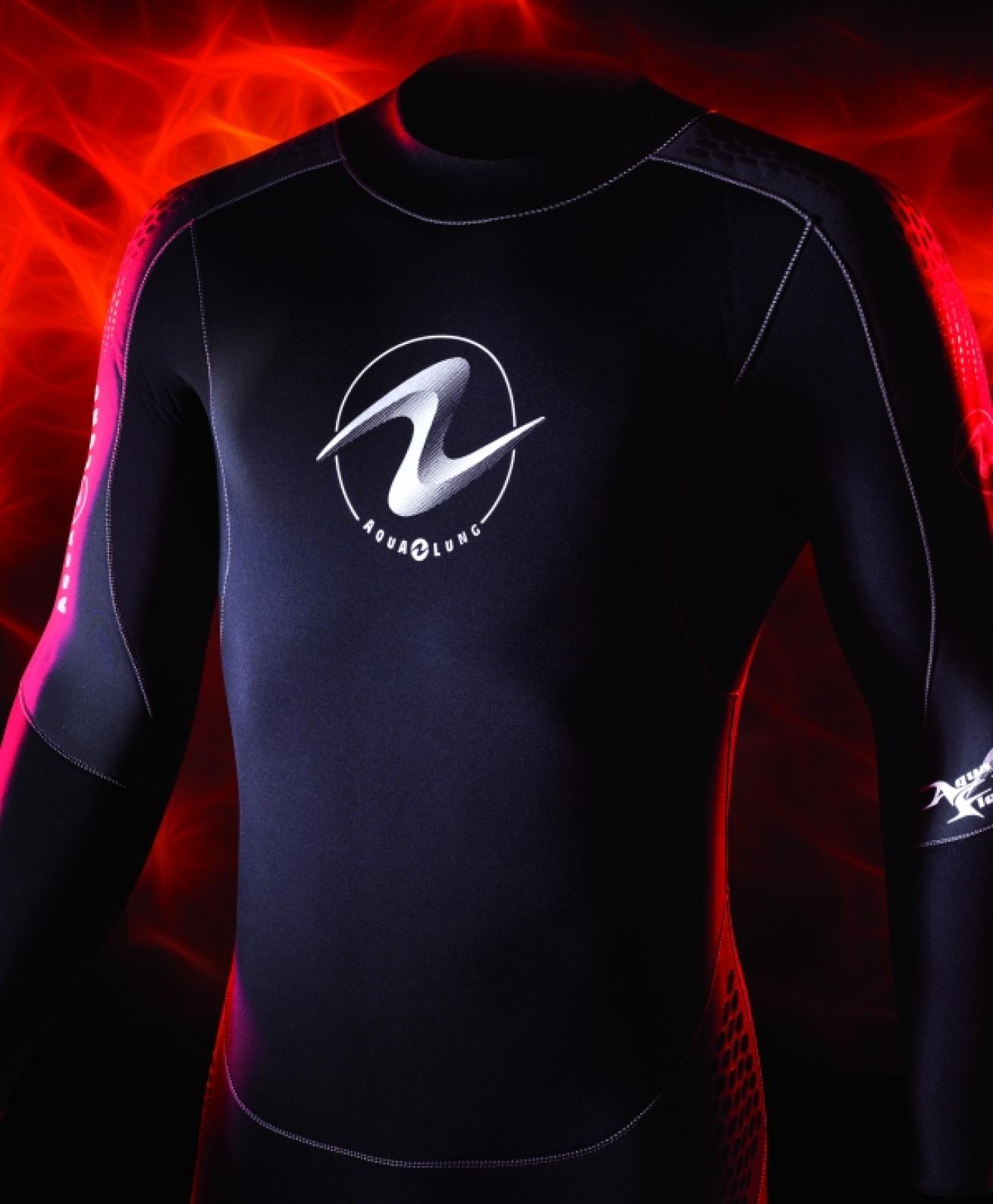
Carrie Garcia
In wetsuit construction, seams are a critical component. The type of stitching used to make these seams can make a huge difference in how comfortable and watertight a wetsuit will ultimately be.
There are basically two types of stitching being used in quality dive wetsuits these days: the flatlock (also known as flatseam) stitch, and the blind-stitch, which is used in conjunction with a gluing process.
The flatlock stitch is commonly found in warm-water suits 3mm thick and less. This stitching method either butts or overlaps two pieces of material and then sews them together with multiple needles in a series of three or four rows of stitching, creating a very strong seam. The flatlock stitch is easier and faster to make, so it tends to be less expensive than a blind stitch, and it allows more stretch to the seam, which can be helpful with today’s hyper flexible neoprene. It’s also a flatter seam, hence the name, so it feels a lot more comfortable against bare skin. However, flatlock stitching does allow water to seep into the suit through its many needle holes. That’s why this style of stich is normally used on suits designed for warmer water where seepage isn’t such a critical factor.
The glued and blind-stitched seam tends to be found on colder water suits 3mm and thicker, primarily because this stitch doesn’t leak. The first step in this process involves gluing the suit’s neoprene panels with two or three coats of neoprene cement (hence the terms “double-glued” or “triple-glued”). This makes the seams waterproof. The second step is sewing the seams so they hold together. This is done with a “blind-stitch,” so-named because the needle penetrates only half the thickness of the material. This gives a seamless appearance on one side of the suit, unless it has been “double blind-stitched,” where this half-sewing is done on both sides of the seam.
Because of the added time and labor involved, blind-stitching tends to be more costly—especially if you’re talking a triple-glued/double-blind-stitched suit. However, what you get for your money is a strong, watertight seam.
On really high-end suits, manufacturers will sometimes run a bead of liquid silicone-based urethane over the glued seam on the opposite side of a blind-stitched seam, making it look like it’s been “welded” together. It makes the seam ultra durable because the liquid weld bonds to the entire seam rather than just at the stitch points. Glued-and-taped is yet another variation of this seam method where flexible bonding tape is applied with heat and pressure over the glued seam on both sides, eliminating the need for any stitching at all.
Bottom line: for maximum flexibility and comfort, you might want to go with a flatlock-seamed suit—that is, if you dive in warm water and don’t mind a little leakage. For maximum warmth and watertightness, you’d be better off with a glued and blind-stitched suit. In the world of diving, there’s plenty of room for both styles.

